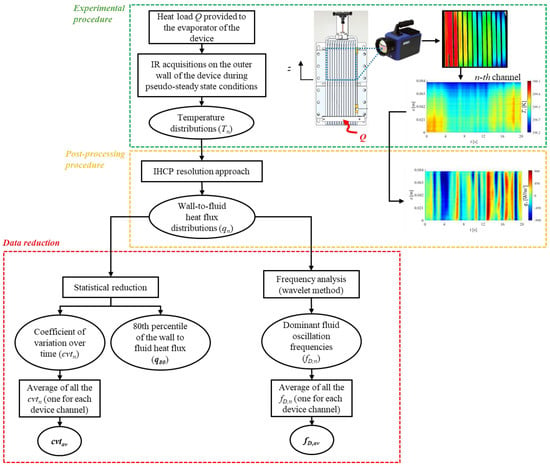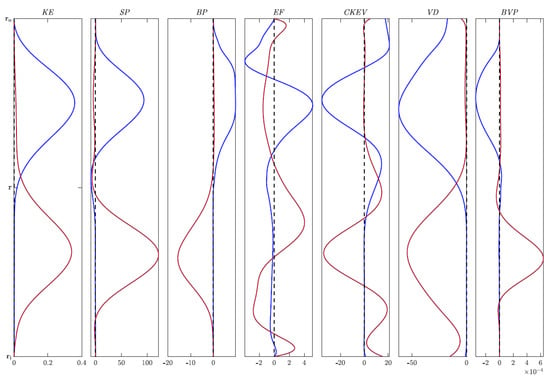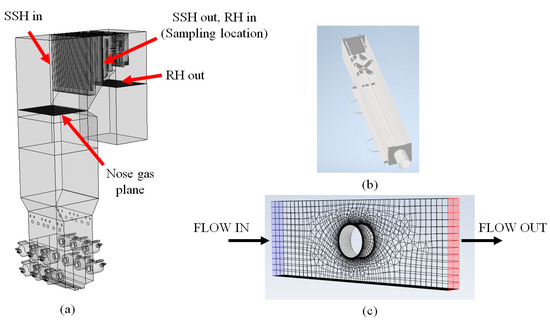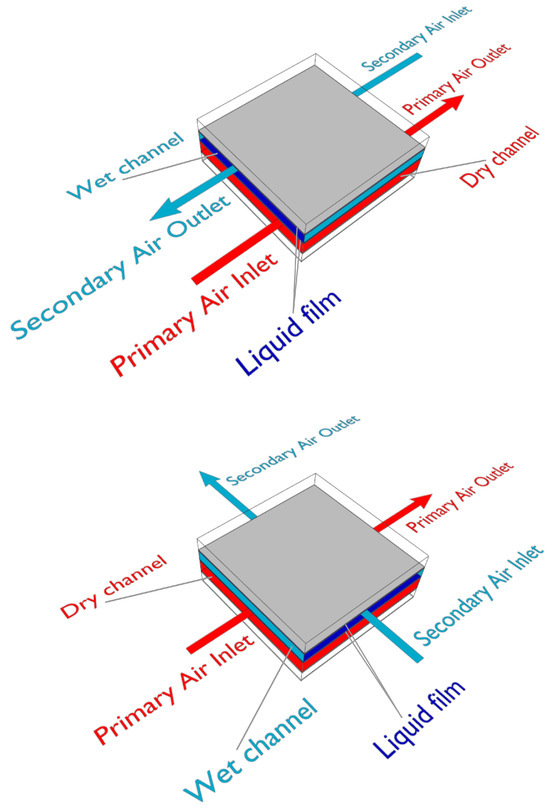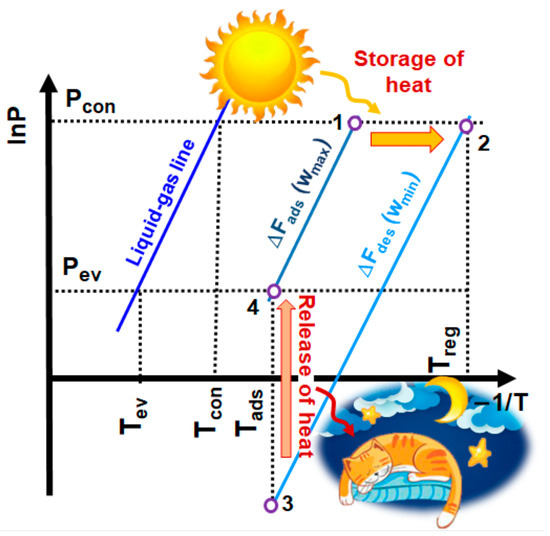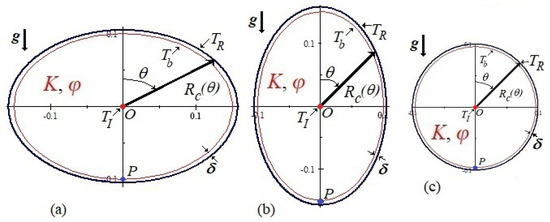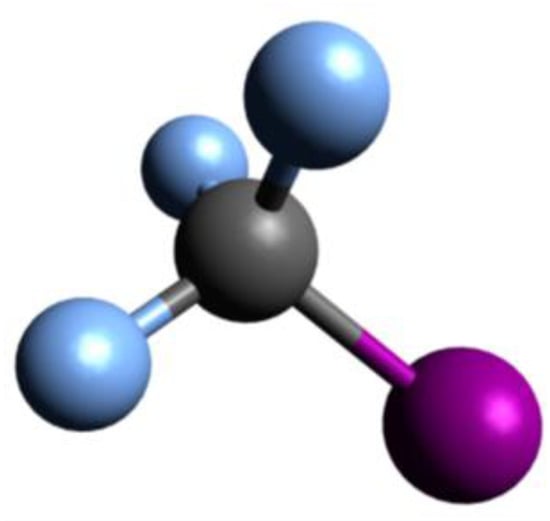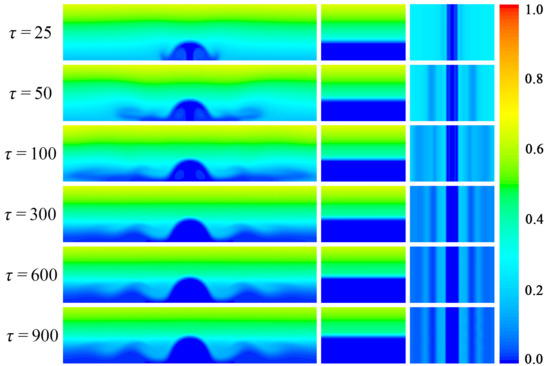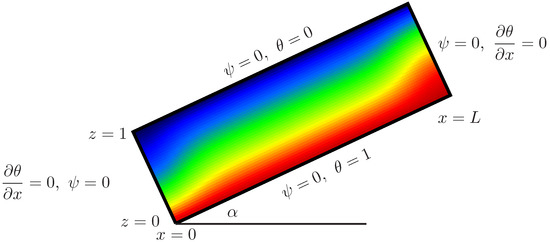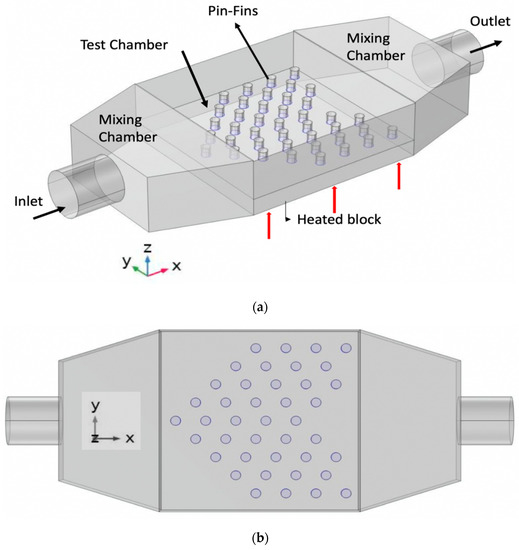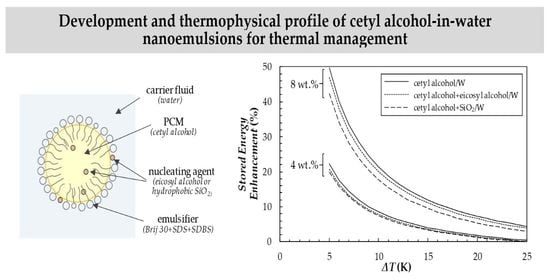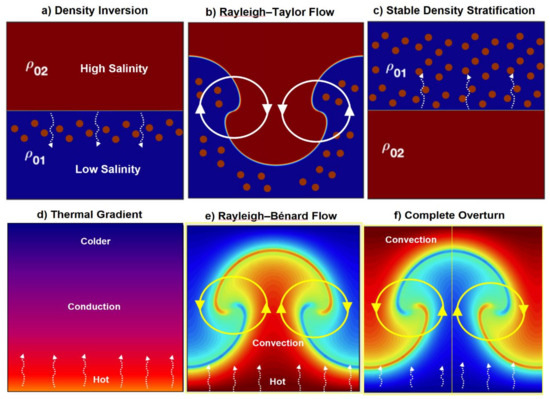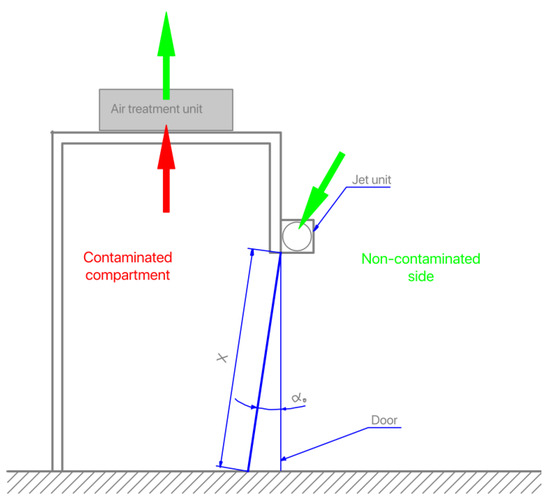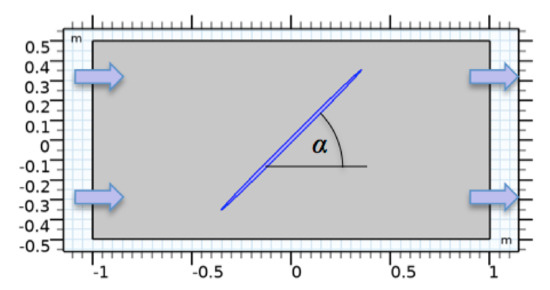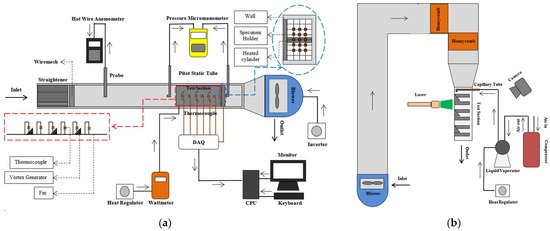Challenges and Advances in Heat and Mass Transfer
Share This Topical Collection
Editor
Topical Collection Information
Dear Colleagues,
This Topical Collection on “Challenges and Advances in Heat and Mass transfer” will publish novel, original, peer-reviewed research manuscripts, short communications, and topical reviews in all areas of heat and mass transfer. These will include analytical, computational, and experimental works.
This Topical Collection invites contributions that include but are not limited to the following:
- Innovative numerical methods for heat and mass transfer;
- Innovative experimental techniques for heat and mass transfer;
- Laminar and turbulent convection;
- Free, mixed, and natural convection processes;
- Convective instabilities;
- Combustion;
- Convection in porous media.
Dr. D. Andrew S. Rees
Collection Editor
Manuscript Submission Information
Manuscripts should be submitted online at www.mdpi.com by registering and logging in to this website. Once you are registered, click here to go to the submission form. Manuscripts can be submitted until the deadline. All submissions that pass pre-check are peer-reviewed. Accepted papers will be published continuously in the journal (as soon as accepted) and will be listed together on the collection website. Research articles, review articles as well as short communications are invited. For planned papers, a title and short abstract (about 100 words) can be sent to the Editorial Office for announcement on this website.
Submitted manuscripts should not have been published previously, nor be under consideration for publication elsewhere (except conference proceedings papers). All manuscripts are thoroughly refereed through a single-blind peer-review process. A guide for authors and other relevant information for submission of manuscripts is available on the Instructions for Authors page. Fluids is an international peer-reviewed open access monthly journal published by MDPI.
Please visit the Instructions for Authors page before submitting a manuscript.
The Article Processing Charge (APC) for publication in this open access journal is 1800 CHF (Swiss Francs).
Submitted papers should be well formatted and use good English. Authors may use MDPI's
English editing service prior to publication or during author revisions.
Published Papers (27 papers)
Open AccessArticle
Multi-Objective Numerical Analysis of Horizontal Rectilinear Earth–Air Heat Exchangers with Elliptical Cross Section Using Constructal Design and TOPSIS
by
Ivanilton Reinato de Andrade, Elizaldo Domingues dos Santos, Houlei Zhang, Luiz Alberto Oliveira Rocha, Andre Luis Razera and Liércio André Isoldi
Viewed by 539
Abstract
This study presents a numerical evaluation of a Horizontal Rectilinear Earth–air Heat Exchanger (EAHE), considering the climatic and soil conditions of Viamão, Brazil, a subtropical region. The Constructal Design method, combined with the Exhaustive Search, was utilized to define the system constraints, degree
[...] Read more.
This study presents a numerical evaluation of a Horizontal Rectilinear Earth–air Heat Exchanger (EAHE), considering the climatic and soil conditions of Viamão, Brazil, a subtropical region. The Constructal Design method, combined with the Exhaustive Search, was utilized to define the system constraints, degree of freedom, and performance indicators. The degree of freedom was characterized by the aspect ratio between the vertical and horizontal lengths of the elliptical cross-section duct (
H/
L). The performance indicators for the EAHE configurations were assessed based on thermal potential (
TP) and pressure drop (
PD). The Technique for Order Preference by Similarity to Ideal Solution (TOPSIS) was applied for multi-objective evaluation, and a methodology for EAHE is proposed. The problem was solved using FLUENT software (version 2024 R2), which employs the Finite Volume Method to solve the conservation equations for mass, momentum, and energy. The (
H/
L)
T,o = 6.0 configuration showed a 16.4% increase in thermal performance for heating and 15.9% for cooling compared to the conventional circular duct. Conversely, the (
H/
L)
F,o = 1.0 configuration reduced pressure loss by 65.33%. The integration of Constructal Design with TOPSIS facilitated the identification of optimized geometries that achieve a balance between performance indicators and those that specifically prioritize thermal or fluid dynamic aspects, being this approach an original scientific contribution of the present work.
Full article
►▼
Show Figures
Open AccessArticle
Are Local Heat Transfer Quantities Useful for Predicting the Working Behavior of Different Pulsating Heat Pipe Layouts? A Comparative Study
by
Luca Pagliarini and Fabio Bozzoli
Viewed by 1201
Abstract
Despite a continuous effort devoted by the scientific community, a large-scale employment of Pulsating Heat Pipes for thermal management applications is still nowadays undermined by the low reliability of such heat transfer systems. The main reason underlying this critical issue is linked to
[...] Read more.
Despite a continuous effort devoted by the scientific community, a large-scale employment of Pulsating Heat Pipes for thermal management applications is still nowadays undermined by the low reliability of such heat transfer systems. The main reason underlying this critical issue is linked to the strongly chaotic thermofluidic behavior of these devices, which prevents a robust prediction of their working behavior for different geometries and operating conditions, consequently hampering proper industrial design. The present work proposes to thoroughly compare data referring to previous infrared investigations on different Pulsating Heat Pipe layouts, which have focused on the estimation of heat fluxes locally exchanged at the wall–fluid interfaces. The aim is to understand the beneficial contribution of local heat transfer quantities in the prediction of the complex physics underlying such heat transfer systems. The results have highlighted that, regardless of the considered geometry and working conditions, wall-to-fluid heat fluxes are able to provide useful quantities to be employed, to some extent, to generalize Pulsating Heat Pipe operation and to improve their existing numerical models.
Full article
►▼
Show Figures
Open AccessArticle
Energy Budget Characterisation of the Optimal Disturbance in Stratified Shear Flow
by
Larry E. Godwin, Philip M. J. Trevelyan, Takeshi Akinaga and Sotos C. Generalis
Viewed by 934
Abstract
Stratified Taylor–Couette flow (STCF) undergoes transient growth. Recent studies have shown that there exists transient amplification in the linear regime of counter-rotating STCF. The kinetic budget of the optimal transient perturbation is analysed numerically to simulate the interaction of the shear production (SP),
[...] Read more.
Stratified Taylor–Couette flow (STCF) undergoes transient growth. Recent studies have shown that there exists transient amplification in the linear regime of counter-rotating STCF. The kinetic budget of the optimal transient perturbation is analysed numerically to simulate the interaction of the shear production (SP), buoyancy flux (BP), and other energy components that contributes to the total optimal transient kinetic energy. These contributions affect the total energy by influencing the perturbation to extract kinetic energy (KE) from the mean flow. The decay of the amplification factor resulted from the positive amplification of both BP and SP, while the growth is attributed to the negative and positive amplification of BP and SP, respectively. The optimal SP is positively amplified, implying that there is the possibility of constant linear growth. These findings agree with the linear growth rate for increasing values of Grashof number.
Full article
►▼
Show Figures
Open AccessArticle
Nonlinear Approach to Jouguet Detonation in Perpendicular Magnetic Fields
by
Andriy A. Avramenko, Igor V. Shevchuk, Margarita M. Kovetskaya, Yulia Y. Kovetska and Andrii I. Tyrinov
Viewed by 1115
Abstract
The focus of this paper was Jouguet detonation in an ideal gas flow in a magnetic field. A modified Hugoniot detonation equation has been obtained, taking into account the influence of the magnetic field on the detonation process and the parameters of the
[...] Read more.
The focus of this paper was Jouguet detonation in an ideal gas flow in a magnetic field. A modified Hugoniot detonation equation has been obtained, taking into account the influence of the magnetic field on the detonation process and the parameters of the detonation wave. It was shown that, under the influence of a magnetic field, combustion products move away from the detonation front at supersonic speed. As the magnetic field strength increases, the speed of the detonation products also increases. A dependence has been obtained that allows us to evaluate the influence of heat release on detonation parameters.
Full article
►▼
Show Figures
Open AccessArticle
Combined Impact of the Lewis Number and Thermal Expansion on Laminar Flame Flashback in Tubes
by
Kai Huang, Louis Benteux, Wenhu Han and Damir M. Valiev
Viewed by 1702
Abstract
The understanding of the boundary layer flame flashback (BLF) has considerably improved in recent decades, driven by the increasing focus on clean energy and the need to address the operational issues associated with flashback. This study investigates the influence of the Lewis number
[...] Read more.
The understanding of the boundary layer flame flashback (BLF) has considerably improved in recent decades, driven by the increasing focus on clean energy and the need to address the operational issues associated with flashback. This study investigates the influence of the Lewis number (
Le) on symmetric flame shapes under the critical conditions for a laminar boundary layer flashback in cylindrical tubes. It has been found that the transformation of the flame shape from a mushroom to a tulip happens in a tube of a given radius, as the thermal expansion coefficient and
Le are modified. A smaller Lewis number results in a local increase in the burning rate at the flame tip, with the flame being able to propagate closer to the wall, which significantly increases the flashback propensity, in line with previous findings. In cases with a Lewis number smaller than unity, a higher thermal expansion results in a flame propagation happening closer to the wall, thus facing a weaker oncoming flow and, consequently, becoming more prone to flashback. For
Le > 1, the effect of the increase in the thermal expansion coefficient on the flashback tendency is much less pronounced.
Full article
►▼
Show Figures
Open AccessArticle
Measurements and Prediction of Ash Deposition in a Cyclone-Fired Boiler Operating under Variable Load Conditions
by
Gautham Krishnamoorthy, Evan Bloom, Krishnamoorthy Viswanathan, Shuchita Sanjay Patwardhan, David John Stadem and Steve Benson
Cited by 1 | Viewed by 1851
Abstract
Measurements of ash deposition rates were made between the secondary superheater and reheater sections of a 450 MW cyclone-fired lignite boiler as the operational load varied from 33 to 100%. Significant reductions in deposition rates with a decrease in operational load were observed.
[...] Read more.
Measurements of ash deposition rates were made between the secondary superheater and reheater sections of a 450 MW cyclone-fired lignite boiler as the operational load varied from 33 to 100%. Significant reductions in deposition rates with a decrease in operational load were observed. To uncover the causative mechanisms behind these observations, operational data from the power plant were used to carry out computational fluid dynamic (CFD) simulations of the boiler. After ascertaining that the gas temperatures and velocities at various sections within the boiler were being represented adequately, decoupled simulations of the ash deposition process on the deposit probe were carried out using a finely resolved boundary layer mesh. Fly ash particle size distribution (PSD) and its concentration for the decoupled calculations were determined from stand-alone cyclone barrel simulations. The ash partitioning (mass %) between the fly ash and slag was found to be ~50:50, which was in line with previous field observations, and it did not vary significantly across different cyclone loads. The predicted PSD of the deposit ash was concentrated in the size range 10–30 microns, which was in agreement with cross-sectional images of the deposit obtained from the measurements. At lower loads, sharp variations in the deposition rates were predicted in the gas temperature range 950–1150 K. The particle kinetic energy—particle viscosity-based capture methodology utilized in this study in conjunction with appropriate ash compositions, ash viscosity models and gas temperature estimates can help estimate slagging propensities at different loads reasonably well in these systems.
Full article
►▼
Show Figures
Open AccessReview
Modeling of Indirect Evaporative Cooling Systems: A Review
by
Roberta Caruana, Stefano De Antonellis, Luca Marocco and Manfredo Guilizzoni
Cited by 6 | Viewed by 3873
Abstract
Air-to-air indirect evaporative cooling (IEC) systems are particular heat exchangers that use the latent heat of evaporation of water to cool down an air stream, without increasing its specific humidity, thus guaranteeing adequate thermohygrometric conditions in the refrigerated environment with low energy consumption.
[...] Read more.
Air-to-air indirect evaporative cooling (IEC) systems are particular heat exchangers that use the latent heat of evaporation of water to cool down an air stream, without increasing its specific humidity, thus guaranteeing adequate thermohygrometric conditions in the refrigerated environment with low energy consumption. Dew-point indirect evaporative cooling (DIEC) systems are based on the IEC technology, but they recirculate a part of the air taken from the room to be refrigerated, in order to possibly achieve a lower air temperature. IEC and DIEC systems are becoming increasingly common these years, as they can ensure a good efficiency, minimizing the environmental impact of the air-conditioning system. Consequently, it has been necessary to develop models, both analytical and numerical, to quickly and accurately design this type of system and to predict their performance. This paper presents a review of the analytical and numerical models developed specifically for IEC and DIEC systems, highlighting their method, main innovations and advantages, and possible limitations. From this analysis, it emerged that analytical models have been developed since the late 1990s and only few of them are suitable for DIEC heat exchangers, while numerical models for both IEC and DIEC systems are gaining popularity in recent years. Almost all the analyzed models have been validated by comparison with numerical and/or experimental data, showing a maximum discrepancy within 10% in the majority of the cases. However, the validations were performed for a few specific cases, so in real applications it might be difficult to associate the model boundary conditions and the heat exchangers operating conditions, such as nozzles orientations, plates materials, water flow rates, and configurations. Another common limitation concerns the modeling of some properties, as wettability factor and air density, which might affect the accuracy of the results.
Full article
►▼
Show Figures
Open AccessArticle
Detonation in van der Waals Gas
by
Andriy A. Avramenko, Igor V. Shevchuk, Margarita M. Kovetskaya and Yulia Y. Kovetska
Cited by 1 | Viewed by 1843
Abstract
Solving problems of detonation control is associated with obtaining detailed information about the gas dynamics accompanying the detonation process. This paper focuses on the dynamics of real gas flow through a plane detonation wave. The influence of real gas parameters on the Chapman–Jouguet
[...] Read more.
Solving problems of detonation control is associated with obtaining detailed information about the gas dynamics accompanying the detonation process. This paper focuses on the dynamics of real gas flow through a plane detonation wave. The influence of real gas parameters on the Chapman–Jouguet detonation process has been studied. The process is described using the Rankine–Hugoniot system of equations. To model the thermodynamic properties of a real gas, the van der Waals equation of state is used. Equations are obtained to determine the ratio of speeds and pressures during the passage of a wave. The influence of van der Waals parameters on changes in the parameters of the detonation process was elucidated. An increase in parameter
A slows down the increase in pressure in the detonation wave, and an increase in parameter
B enhances it. Differences in the speed of combustion products for ideal and real gases are shown. For an ideal gas, combustion products flow from the detonation front at a critical (sonic) speed. For a van der Waals gas, the speed of combustion products may be greater than the critical one. Moreover, both factors, additional pressure (
A) and additional volume (
B), lead to acceleration of combustion products. Effects of heat release on the process parameters were elucidated.
Full article
►▼
Show Figures
Open AccessReview
Surface Roughness in RANS Applied to Aircraft Ice Accretion Simulation: A Review
by
Kevin Ignatowicz, François Morency and Héloïse Beaugendre
Cited by 1 | Viewed by 2529
Abstract
Experimental and numerical fluid dynamics studies highlight a change of flow structure in the presence of surface roughness. The changes involve both wall heat transfer and skin friction, and are mainly restricted to the inner region of the boundary layer. Aircraft in-flight icing
[...] Read more.
Experimental and numerical fluid dynamics studies highlight a change of flow structure in the presence of surface roughness. The changes involve both wall heat transfer and skin friction, and are mainly restricted to the inner region of the boundary layer. Aircraft in-flight icing is a typical application where rough surfaces play an important role in the airflow structure and the subsequent ice growth. The objective of this work is to investigate how surface roughness is tackled in RANS with wall resolved boundary layers for aeronautics applications, with a focus on ice-induced roughness. The literature review shows that semi-empirical correlations were calibrated on experimental data to model flow changes in the presence of roughness. The correlations for RANS do not explicitly resolve the individual roughness. They principally involve turbulence model modifications to account for changes in the velocity and temperature profiles in the near-wall region. The equivalent sand grain roughness (ESGR) approach emerges as a popular metric to characterize roughness and is employed as a length scale for the RANS model. For in-flight icing, correlations were developed, accounting for both surface geometry and atmospheric conditions. Despite these research efforts, uncertainties are present in some specific conditions, where space and time roughness variations make the simulations difficult to calibrate. Research that addresses this gap could help improve ice accretion predictions.
Full article
►▼
Show Figures
Open AccessArticle
A Parametric Design Study of Natural-Convection-Cooled Heat Sinks
by
Oisín McCay, Rajesh Nimmagadda, Syed Mughees Ali and Tim Persoons
Cited by 1 | Viewed by 3662
Abstract
Effective natural-convection-cooled heat sinks are vital to the future of electronics cooling due to their low energy demand in the absence of an external pumping agency in comparison to other cooling methods. The present numerical study was carried out with ANSYS Fluent and
[...] Read more.
Effective natural-convection-cooled heat sinks are vital to the future of electronics cooling due to their low energy demand in the absence of an external pumping agency in comparison to other cooling methods. The present numerical study was carried out with ANSYS Fluent and aimed at identifying a more-effective fin design for enhancing heat transfer in natural convection applications for a fixed base-plate size of 100 mm × 100 mm under an applied heat flux of 4000 W/m
2. The Rayleigh number used in the present study lied within the range of 2.6 × 10
6 to 4.5 × 10
6. Initially, a baseline case with rectangular fins was considered in the present study, and it was optimized with respect to fin spacing. This optimized baseline case was then validated against the semi-empirical correlation from the scientific literature. Upon good agreement, the validated model was used for comparative analysis of different heat sink configurations with rectangular, trapezoidal, curved, and angled fins by constraining the surface area of the heat transfer. The optimized fin spacing obtained for the baseline case was also used for the other heat sink configurations, and then, the fin designs were further optimized for better performance. However, for the angled fin case, the optimized configuration found in the scientific literature was adopted in the present study. The proposed novel curved fin design with a shroud showed a 4.1% decrease in the system’s thermal resistance with an increase in the heat transfer coefficient of 4.4% when compared to the optimized baseline fin case. The obtained results were further non-dimensionalized with the proposed scaling in terms of the baseline case for the two novel heat sink cases (trapezoidal, curved).
Full article
►▼
Show Figures
Open AccessArticle
The Heat Transfer in Plate Fin Heat Exchanger for Adsorption Energy Storage: Theoretical Estimation and Experimental Verification of the Methodology for Heat Accumulation Process
by
Alexandra Grekova, Svetlana Strelova, Anton Lysikov and Mikhail Tokarev
Cited by 3 | Viewed by 1577
Abstract
Adsorption energy storage is a promising resource-saving technology that allows the rational use of alternative heat sources. One of the most important parts of the adsorption heat accumulator is the adsorber heat exchanger. The parameters of heat transfer in this unit determine how
[...] Read more.
Adsorption energy storage is a promising resource-saving technology that allows the rational use of alternative heat sources. One of the most important parts of the adsorption heat accumulator is the adsorber heat exchanger. The parameters of heat transfer in this unit determine how fast heat from an alternative energy source, such as the Sun, will be stored. For the design of adsorption heat accumulators, plate fin heat exchangers are mainly used. In this paper, the procedure for the estimation of the global heat transfer coefficient for the adsorber heat exchanger depending on its geometry is considered. The heat transfer coefficient for a LiCl/SiO
2 sorbent flat layer under conditions of heat storage stage was measured. Based on these data, the global heat transfer coefficients for a number of industrial heat exchangers were theoretically estimated and experimentally measured for the adsorption cycle of daily heat storage. It was shown that theoretically obtained values are in good agreement with the values of the global heat transfer coefficients measured experimentally. Thus, the considered technique makes it possible to determine the most promising geometry of the plate fin heat exchanger for a given adsorption heat storage cycle without complicated experiments.
Full article
►▼
Show Figures
Open AccessArticle
Experiments on Steam Injection into Preformed Steam Chambers of Various Shapes for Maximum Condensate Recovery
by
Abraham Medina, Diego Benjamin García, Abel López Villa, Benjamin Castillo-Morales and Georgiy Polupan
Viewed by 1298
Abstract
Recently, in a previous study, we experimentally showed the existence of an optimal injected steam mass flow rate, per unit length,
, which produces the maximal recovery of condensate in a preformed steam chamber with an elliptical cross section
[...] Read more.
Recently, in a previous study, we experimentally showed the existence of an optimal injected steam mass flow rate, per unit length,
, which produces the maximal recovery of condensate in a preformed steam chamber with an elliptical cross section of a horizontal semi-major axis. Mutatis mutandis, in this work, we present experimental studies in preformed steam chambers: one elliptical and the other circular. In both cases, we also found the existence of unique optimal values. These configurations try to recreate the steam condensation at a given time-lapse, as it would occur during the growth stage of the steam-assisted gravity drainage (SAGD) process: a method used in the recovery of heavy and extra-heavy oil from homogeneous reservoirs. Finding the optimal mass flow rates in the actual recovery process could be useful in the design of optimized SAGD processes.
Full article
►▼
Show Figures
Open AccessArticle
A Study on the Effectiveness of SCD Seeding Fog Dissipation Mechanism Using LiDAR Sensor
by
Min-Gyun Park, Hyun-Su Kang and Youn-Jea Kim
Viewed by 1871
Abstract
Fog interferes with traffic flow and causes major accidents. In foggy conditions, traffic accident death rates are higher than in other weather conditions. Research on fog dissipation technology is needed to reduce the incidence of accidents caused by fog. There are various artificial
[...] Read more.
Fog interferes with traffic flow and causes major accidents. In foggy conditions, traffic accident death rates are higher than in other weather conditions. Research on fog dissipation technology is needed to reduce the incidence of accidents caused by fog. There are various artificial methods to remove fog. In this study, two methods of natural dissipation by gravity sedimentation and a solid carbon dioxide seeding fog dissipation mechanism were compared and analyzed in cold fog conditions. Solid carbon dioxide was selected as the fog dissipation particle. In this experiment, solid carbon dioxide seeding with three different values of weight (500 g, 1000 g, and 1500 g) was considered. This is because fog particles can be supercooled and fog can be removed. A light detection and ranging (LiDAR) sensor were used to quantitatively check the effect of improving visibility when solid carbon dioxide was seeded in the fog. The LiDAR sensor detects the surrounding environment through distance measurements by emitting lasers and processing the laser responses. A camera was used to visually observe the phenomenon occurring inside the calorimetric chamber. As a result, the fog dissipation mechanism using solid carbon dioxide seeding under cold fog conditions was proven to be effective in improving the visible distance compared with natural dissipation.
Full article
►▼
Show Figures
Open AccessArticle
Experimental Analysis of Local Condensation Heat Transfer Characteristics of CF3I Inside a Plate Heat Exchanger
by
Md. Mahbubur Rahman, Djiby Bal, Keishi Kariya and Akio Miyara
Cited by 4 | Viewed by 2106
Abstract
Due to its low global warming potential (GWP) and good environmental properties, CF
3I can be a suitable component of refrigerant mixtures in the field of refrigeration and air conditioning. In this work, the local condensation heat transfer characteristics of CF
3
[...] Read more.
Due to its low global warming potential (GWP) and good environmental properties, CF
3I can be a suitable component of refrigerant mixtures in the field of refrigeration and air conditioning. In this work, the local condensation heat transfer characteristics of CF
3I were experimentally investigated in a plate heat exchanger (PHE). The condensation heat transfer experiments were carried out under conditions of vapor qualities from 1.0 to 0.0, at saturation temperatures of 25–30 °C, mass fluxes of 20–50 kg/m
2s, and heat fluxes of 10.4–13.7 kW/m
2. Local heat transfer coefficients were found to vary in both the horizontal and vertical directions of the plate heat exchanger showing similar trends in all mass fluxes. In addition, the characteristics of local heat flux and wall temperature distribution as a function of distance from the inlet to the outlet of the refrigerant channel were explored in detail. The comparison of the experimental data of CF
3I with that of R1234yf in the same test facility showed that the heat transfer coefficients of CF
3I were comparable to R1234yf at a low vapor quality and a mass flux of 20 kg/m
2s. However, R1234yf exhibited a transfer coefficient about 1.5 times higher at all vapor qualities and a mass flux of 50 kg/m
2s. The newly developed correlation predicts well the experimentally obtained data for both CF
3I and R1234yf within ±30%.
Full article
►▼
Show Figures
Open AccessArticle
Maximum Penetration Height and Intrusion Speed of Weak Symmetric Plane Fountains in Linearly Stratified Fluids
by
Mohammad I. Inam, Wenxian Lin, Steven W. Armfield and Mehdi Khatamifar
Cited by 1 | Viewed by 1444
Abstract
The flow behavior of weak symmetric plane fountains in linearly stratified fluids is studied numerically with three-dimensional simulations over a range of the Froude (
), Reynolds (
), and stratification numbers (
s). The two main parameters
[...] Read more.
The flow behavior of weak symmetric plane fountains in linearly stratified fluids is studied numerically with three-dimensional simulations over a range of the Froude (
), Reynolds (
), and stratification numbers (
s). The two main parameters describing the fountain characterization are the dimensionless maximum fountain penetration height (
) and intrusion velocity (
), which differ significantly at different flow development stages. It was found that the stratification stabilizes the symmetry of the weak fountains, which makes the fountain become asymmetric at a larger
value, and
at the fully developed stage continues to increase as a result of the intrusion, which continually changes the ambient fluid stratification features, thus the buoyant force. The evolution of intrusion experiences three distinct stages. Both
and
s have effects on
and
, with the effect of
usually larger than that of
s. The overall impacts of
and
s can be quantified in terms of
, with
a and
b varying for different parameters. With numerical results, empirical correlations are produced in terms of
for each relevant parameter, which generally predict the results very well.
Full article
►▼
Show Figures
Open AccessArticle
Modal Selection for Inclined Darcy-Bénard Convection in a Rectangular Cavity
by
D. Andrew S. Rees and Antonio Barletta
Cited by 1 | Viewed by 1376
Abstract
Nonlinear free convection in an inclined rectangular porous cavity heated from below has been studied using a two-dimensional spectral decomposition. The code uses pseudo-arclength continuation to follow solution curves around fold bifurcations. The evolution with inclination of the pattern of convection is complicated
[...] Read more.
Nonlinear free convection in an inclined rectangular porous cavity heated from below has been studied using a two-dimensional spectral decomposition. The code uses pseudo-arclength continuation to follow solution curves around fold bifurcations. The evolution with inclination of the pattern of convection is complicated and it relies strongly on both the Darcy–Rayleigh number and the aspect ratio of the cavity. When the inclination is large it is generally true that only one cell appears, and that it has a circulation that is consistent with the direction of the buoyancy forces along the heated and cooled boundaries. However, as the inclination decreases back towards the horizontal, this unicellular pattern evolves, sometimes initially via fold bifurcations, into patterns with different numbers of cells. Such evolutions always conserve the parity of the number of cells (such as one cell becoming three and then five, or two cells becoming four), but bifurcations also arise between patterns with different parities. These phenomena are illustrated using a suitable selection of solution curves that show the dependence of the Nusselt number on the inclination.
Full article
►▼
Show Figures
Open AccessArticle
Thermohydraulic Performance of Chevron Pin-Fins
by
Mohamad Ziad Saghir and Ibrahim Ghalayini
Cited by 2 | Viewed by 2056
Abstract
The present study focuses on the optimum design effectiveness in heat removal for small surfaces. Pin-fin made of solid and porous cylindrical shape forming chevron is investigated numerically using the finite element method. The design consists of 3-chevron and 5-chevron configurations connected to
[...] Read more.
The present study focuses on the optimum design effectiveness in heat removal for small surfaces. Pin-fin made of solid and porous cylindrical shape forming chevron is investigated numerically using the finite element method. The design consists of 3-chevron and 5-chevron configurations connected to a heated block with fluid circulating between the chevron and above them. Variable Reynolds number and pin-fins height ranging from 2 mm to 8 mm are investigated. The full Navier–Stokes equation combined with the energy equation was solved in the presence of the solid pin-fins. The Darcy–Brinkman model with the effective energy equation is used in the presence of the porous pin-fins. The system is solved for Reynolds numbers ranging from 50 to 1000, thus remaining in the laminar regime. Results revealed that the best performance evaluation criterion is higher for the 8 mm porous pin-fins regardless of their permeability. If one ignores the pressure drop and friction contribution, a solid pin-fin having a height of 4 mm showed the best heat absorption mechanism.
Full article
►▼
Show Figures
Open AccessArticle
Experimental Investigation on Heat Transfer Enhancement with Passive Inserts in Flat Tubes in due Consideration of an Efficiency Assessment
by
Dirk Bertsche, Paul Knipper, Sebastian Meinicke, Konrad Dubil and Thomas Wetzel
Cited by 4 | Viewed by 3182
Abstract
This paper presents results of an experimental investigation on pressure drop and heat transfer for a wide range of Reynolds and Prandtl numbers ranging from 8 < Pr < 60 and 40 < Re < 3500, for flat tubes without and with passive
[...] Read more.
This paper presents results of an experimental investigation on pressure drop and heat transfer for a wide range of Reynolds and Prandtl numbers ranging from 8 < Pr < 60 and 40 < Re < 3500, for flat tubes without and with passive inserts. For three different kinds of passive insert designs, the impact on heat and momentum transfer due to coaction of the total set of passive inserts with different shape and amount was investigated. Experimental results were analyzed regarding two main aspects: Heat transfer mechanisms and pressure drop induced by friction and form drag forces due to the presence of different shapes. After heat and momentum transfer mechanisms for each passive insert design were analyzed, heat transfer and pressure drop enhancement were compared to each other, leading to an efficiency discussion. Different concepts for efficiency evaluation, which are cited in literature, were applied to the presented experimental data. Pros and cons of the different concepts are discussed. Finally, we propose an equation for evaluation of total performance, which fully respects the energetic and exergetic aspects of heat transfer and pressure drop enhancement.
Full article
►▼
Show Figures
Open AccessArticle
Development and Thermophysical Profile of Cetyl Alcohol-in-Water Nanoemulsions for Thermal Management
by
David Cabaleiro, Sonia Losada-Barreiro, Filippo Agresti, Carolina Hermida-Merino, Laura Fedele, Luis Lugo, Simona Barison and Manuel M. Piñeiro
Cited by 9 | Viewed by 4104
Abstract
This study focuses on the preparation, thermophysical and rheological characterization of phase change material nanoemulsions as latent functionally thermal fluids. Aqueous dispersions with fine droplets of cetyl alcohol (with a melting temperature at ~321 K) were prepared by means of a solvent-assisted method,
[...] Read more.
This study focuses on the preparation, thermophysical and rheological characterization of phase change material nanoemulsions as latent functionally thermal fluids. Aqueous dispersions with fine droplets of cetyl alcohol (with a melting temperature at ~321 K) were prepared by means of a solvent-assisted method, combining ultrasonication with non-ionic and anionic emulsifiers. Eicosyl alcohol (melting at ~337 K) and hydrophobic silica nanoparticles were tested as nucleating agents. Droplet size studies through time and after freeze–thaw cycles confirmed the good stability of formulated nanoemulsions. Phase change analyses proved the effectiveness of eicosyl alcohol to reduce subcooling to a few Kelvin. Although phase change material emulsions exhibited thermal conductivities much larger than bulk cetyl alcohol (at least 60% higher when droplets are solid), reductions in this property reached 15% when compared to water. Samples mainly showed desirable Newtonian behavior (or slight shear thinning viscosities) and modifications in density around melting transition were lower than 1.2%. In the case of phase change material nanoemulsions with 8 wt.% content of dispersed phase, enhancements in the energy storage capacity overcome 20% (considering an operational temperature interval of 10 K around solid–liquid phase change). Formulated dispersions also showed good thermal reliability throughout 200 solidification–melting cycles.
Full article
►▼
Show Figures
Open AccessArticle
Numerical Study of Large-Scale Fire in Makkah’s King Abdulaziz Road Tunnel
by
Kamel Guedri, Abdullah A. Abdoon, Omar S. Bagabar, Mowffaq Oreijah, Abdessattar Bouzid and Shadi M. Munshi
Cited by 2 | Viewed by 2929
Abstract
Tunnel fires are one of the most dangerous catastrophic events that endanger human life. They cause damage to infrastructure because of the limited space in the tunnel, lack of escape facilities, and difficulty that intervention forces have in reaching the fire position, especially
[...] Read more.
Tunnel fires are one of the most dangerous catastrophic events that endanger human life. They cause damage to infrastructure because of the limited space in the tunnel, lack of escape facilities, and difficulty that intervention forces have in reaching the fire position, especially in highly crowded areas, such as Makkah in the Hajj season. Unfortunately, performing experimental tests on tunnel fire safety is particularly challenging because of the prohibitive cost, limited possibilities, and losses that these tests can cause. Therefore, large-scale modeling, using fire dynamic simulation, is one of the best techniques used to limit these costs and losses. In the present work, a fire scenario in the Makkah’s King Abdulaziz Road tunnel was analyzed using the Fire Dynamics Simulator (FDS). The effects of the heat released per unit area, soot yield, and CO yield on the gas temperature, radiation, concentrations of the oxygen and combustion products CO and CO
2, and air velocity were examined. The results showed that the radiation increased with the heat released per unit area and the soot yield affected all parameters, except the oxygen concentration and air velocity. The CO yield significantly affects CO concentration, and its influence on the other studied parameters is negligible. Moreover, based on the validation part, the results proved that FDS have limitations in tunnel fires, which impact the smoke layer calculation at the upstream zone of the fire. Therefore, the users or researchers should carefully be concerned about these weaknesses when using FDS to simulate tunnel fires. Further comprehensive research is crucial, as tunnel fires have severe impacts on various aspects of people’s lives.
Full article
►▼
Show Figures
Open AccessArticle
Topographically Controlled Marangoni-Rayleigh-Bénard Convection in Liquid Metals
by
Marcello Lappa, Aydin Sayar and Wasim Waris
Cited by 1 | Viewed by 2780
Abstract
Convection induced in a layer of liquid with a top free surface by a distribution of heating elements at the bottom can be seen as a variant of standard Marangoni–Rayleigh–Bénard Convection where in place of a flat boundary at constant temperature delimiting the
[...] Read more.
Convection induced in a layer of liquid with a top free surface by a distribution of heating elements at the bottom can be seen as a variant of standard Marangoni–Rayleigh–Bénard Convection where in place of a flat boundary at constant temperature delimiting the system from below, the underlying thermal inhomogeneity reflects the existence of a topography. In the present work, this problem is investigated numerically through solution of the governing equations for mass, momentum and energy in their complete, three-dimensional time-dependent and non-linear form. Emphasis is given to a class of liquids for which thermal diffusion is expected to dominate over viscous effects (liquid metals). Fixing the Rayleigh and Marangoni number to 10
4 and 5 × 10
3, respectively, the sensitivity of the problem to the geometrical, kinematic and thermal boundary conditions is investigated parametrically by changing: the number and spacing of heating elements, their vertical extension, the nature of the lateral boundary (solid walls or periodic boundary) and the thermal behavior of the portions of bottom wall between adjoining elements (assumed to be either adiabatic or at the same temperature of the hot blocks). It is shown that, like the parent phenomena, this type of thermal flow is extremely sensitive to the specific conditions considered. The topography can be used to exert a control on the emerging flow in terms of temporal response and patterning behavior.
Full article
►▼
Show Figures
Open AccessArticle
Data-Driven Modeling of Geometry-Adaptive Steady Heat Convection Based on Convolutional Neural Networks
by
Jiang-Zhou Peng, Xianglei Liu, Zhen-Dong Xia, Nadine Aubry, Zhihua Chen and Wei-Tao Wu
Cited by 21 | Viewed by 2937
Abstract
Heat convection is one of the main mechanisms of heat transfer, and it involves both heat conduction and heat transportation by fluid flow; as a result, it usually requires numerical simulation for solving heat convection problems. Although the derivation of governing equations is
[...] Read more.
Heat convection is one of the main mechanisms of heat transfer, and it involves both heat conduction and heat transportation by fluid flow; as a result, it usually requires numerical simulation for solving heat convection problems. Although the derivation of governing equations is not difficult, the solution process can be complicated and usually requires numerical discretization and iteration of differential equations. In this paper, based on neural networks, we developed a data-driven model for an extremely fast prediction of steady-state heat convection of a hot object with an arbitrary complex geometry in a two-dimensional space. According to the governing equations, the steady-state heat convection is dominated by convection and thermal diffusion terms; thus the distribution of the physical fields would exhibit stronger correlations between adjacent points. Therefore, the proposed neural network model uses convolutional neural network (CNN) layers as the encoder and deconvolutional neural network (DCNN) layers as the decoder. Compared with a fully connected (FC) network model, the CNN-based model is good for capturing and reconstructing the spatial relationships of low-rank feature spaces, such as edge intersections, parallelism, and symmetry. Furthermore, we applied the signed distance function (SDF) as the network input for representing the problem geometry, which contains more information compared with a binary image. For displaying the strong learning and generalization ability of the proposed network model, the training dataset only contains hot objects with simple geometries: triangles, quadrilaterals, pentagons, hexagons, and dodecagons, while the testing cases use arbitrary and complex geometries. According to the study, the trained network model can accurately predict the velocity and temperature field of the problems with complex geometries, which has never been seen by the network model during the model training; and the prediction speed is two orders faster than the CFD. The ability of accurate and extremely fast prediction of the network model suggests the potential of applying reduced-order network models to the applications of real-time control and fast optimization in the future.
Full article
►▼
Show Figures
Open AccessArticle
Diffusive Mass Transfer and Gaussian Pressure Transient Solutions for Porous Media
by
Ruud Weijermars
Cited by 19 | Viewed by 3257
Abstract
This study revisits the mathematical equations for diffusive mass transport in 1D, 2D and 3D space and highlights a widespread misconception about the meaning of the regular and cumulative probability of random-walk solutions for diffusive mass transport. Next, the regular probability solution for
[...] Read more.
This study revisits the mathematical equations for diffusive mass transport in 1D, 2D and 3D space and highlights a widespread misconception about the meaning of the regular and cumulative probability of random-walk solutions for diffusive mass transport. Next, the regular probability solution for molecular diffusion is applied to pressure diffusion in porous media. The pressure drop (by fluid extraction) or increase (by fluid injection) due to the production system may start with a simple pressure step function. The pressure perturbation imposed by the step function (representing the engineering intervention) will instantaneously diffuse into the reservoir at a rate that is controlled by the hydraulic diffusivity. Traditionally, the advance of the pressure transient in porous media such as geological reservoirs is modeled by two distinct approaches: (1) scalar equations for well performance testing that do not attempt to solve for the spatial change or the position of the pressure transient without reference to a well rate; (2) advanced reservoir models based on numerical solution methods. The Gaussian pressure transient solution method presented in this study can compute the spatial pressure depletion in the reservoir at arbitrary times and is based on analytical expressions that give spatial resolution without gridding-meaning solutions that have infinite resolution. The Gaussian solution is efficient for quantifying the advance of the pressure transient and associated pressure depletion around single wells, multiple wells and hydraulic fractures. This work lays the basis for the development of advanced reservoir simulations based on the superposition of analytical pressure transient solutions.
Full article
►▼
Show Figures
Open AccessArticle
Mechanical and Dynamic Maps of Disc Brakes under Different Operating Conditions
by
R. A. García-León, N. Afanador-García and J. A. Gómez-Camperos
Cited by 3 | Viewed by 3165
Abstract
The operating conditions during the braking process in an automobile affect the tribological contact between the pad and disc brake, thus, influencing the times and distances of braking and, in a more significant way, the safety of the braking process. This mathematical work
[...] Read more.
The operating conditions during the braking process in an automobile affect the tribological contact between the pad and disc brake, thus, influencing the times and distances of braking and, in a more significant way, the safety of the braking process. This mathematical work aimed to provide a general visualization of the disc brake’s mechanical, dynamic, and thermal behavior under different operating conditions through 2D maps of the power dissipated, braking time, and braking distance of a disc brake with a ventilation blade N- 38 type. However, the dissipated energy on the disc brake in terms of temperature was analyzed considering Newton’s cooling law and mathematical calculations through classical theories of the dynamic and mechanical behavior of the disc brakes. For this purpose, the Response Surface Methodology (RSM) and Distance Weighted Least Squares (DWLS) fitting model considered different operating conditions of the disc brake. The results demonstrate that the disc brakes can be used effectively in severe operational requirements with a speed of 100 km/h and an ambient temperature of 27 °C, without affecting the occupant’s safety or the braking system and the pad. For the different conditions evaluated, the instantaneous temperature reaches values of 182.48 and 82.94 °C, where the high value was found for a total deceleration to 100 km/h to 0, which represent a total braking distance of around 44.20 to 114.96 m depending on the inclination angle (θ). Furthermore, the energy dissipation in the disc brakes depends strongly on the disc, blades and pad geometry, the type of material, parameters, and the vehicle operating conditions, as can be verified with mathematical calculation to validate the contribution of the effectiveness of the braking process during its real operation.
Full article
►▼
Show Figures
Open AccessArticle
Full-Size Experimental Assessment of the Aerodynamic Sealing of Low Velocity Air Curtains
by
João Carlos Godinho Viegas, Levi Carrasco, Luis Pinto, João Morais, Paulo Morais and Daniel Aelenei
Cited by 2 | Viewed by 2134
Abstract
Vertical air curtains are often used to separate two different zones to reduce contaminant transfer or even to provide aerodynamic sealing from one zone to the other. In this isothermal full-size experimental research work, the contaminant transfer between zones is reduced using an
[...] Read more.
Vertical air curtains are often used to separate two different zones to reduce contaminant transfer or even to provide aerodynamic sealing from one zone to the other. In this isothermal full-size experimental research work, the contaminant transfer between zones is reduced using an air extraction from the “contaminated” compartment and an air curtain. This work correlates the minimum exhaust air flow rate required to reach the aerodynamic sealing at the opening connecting two different zones with the jet nozzle velocity for small nozzle thicknesses (5 mm, 10 mm and 16 mm), particularly for Reynolds numbers below 3800. Following the experimental study, a general physical law that relates the jet parameters (angle, nozzle thickness and jet velocity at the nozzle) with the average velocity through the opening (for the condition of acceptable contaminant tightness) was obtained. The results showed that the average velocity of the flow across a door protected by an air curtain required to keep the aerodynamic sealing varies linearly with Re. The slope, however, is different below and above Re = 3820.
Full article
►▼
Show Figures
Open AccessArticle
Breakthrough Investigation of Advective and Diffusive Transport in a Porous Matrix with a Crack
by
Ekkehard Holzbecher
Viewed by 1912
Abstract
Fluid flow and transport processes in fractured porous media are of particular interest for geologists and in the material sciences. Here a systematic investigation is presented, dealing with a generic geometric set-up of a porous matrix with a crack. In such a combined
[...] Read more.
Fluid flow and transport processes in fractured porous media are of particular interest for geologists and in the material sciences. Here a systematic investigation is presented, dealing with a generic geometric set-up of a porous matrix with a crack. In such a combined porous medium/free fluid system flow patterns have been examined frequently, while the resulting transport patterns have attracted less attention. Using numerical modeling with finite elements the problem is approached using a dimensionless formulation. With a reduced number of dimensionless parameter combinations (Darcy-, Peclet- and Reynolds-numbers) solution dependencies are examined in parametric sweeps. Breakthrough curves are fitted in comparison to those of 1D model approaches, yielding effective diffusivities and velocities. The computations reveal highest sensitivity concerning the angle between crack axis and flow direction, followed by the Peclet number and the crack axes ratio. As a dimensionless representation is used the results are scale independent. Thus, they deliver estimations concerning effective heat and solute transport parameters that can be relevant in all application fields.
Full article
►▼
Show Figures
Open AccessArticle
Evaluation of Vortex Generators in the Heat Transfer Improvement of Airflow through an In-Line Heated Tube Arrangement
by
Syaiful, Tri Wahyuni, Bambang Yunianto and Nazaruddin Sinaga
Cited by 2 | Viewed by 2891
Abstract
Improving heat transfer from surface to airflow is a current research concern for enhancing energy efficiency. The use of vortex generators for improving heat transfer from the surface to the airflow is very effective. Therefore, this study focuses on applying flat and concave
[...] Read more.
Improving heat transfer from surface to airflow is a current research concern for enhancing energy efficiency. The use of vortex generators for improving heat transfer from the surface to the airflow is very effective. Therefore, this study focuses on applying flat and concave vortex generators with and without holes in order to improve heat transfer. In this study, the number of pairs of vortex generators was varied from one to three pairs at a certain angle of attack for various forms of vortex generators. The airflow velocity through the duct was varied in the range of 0.4 to 2.0 m/s at 0.2 m/s intervals. From the investigation results, we observed that the highest thermal performance was found with the use of concave delta winglets without holes for various pairs of vortex generators in terms of the overall Reynolds number. The highest thermal enhancement factor was found to be around 1.42 at a Reynolds number of approximately 9000. From this study, it was also shown that the lowest cost–benefit ratio was about 1.75 at a Reynolds number of approximately 3500 for three pairs of vortex generators.
Full article
►▼
Show Figures






